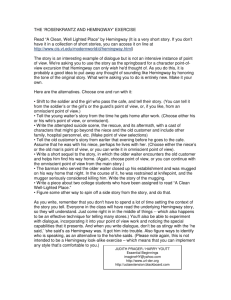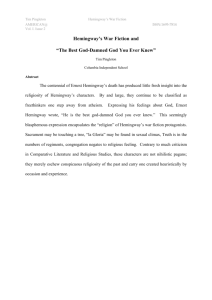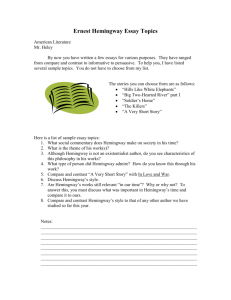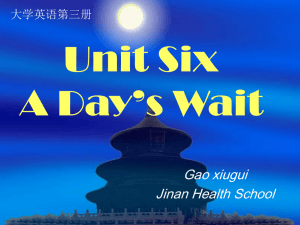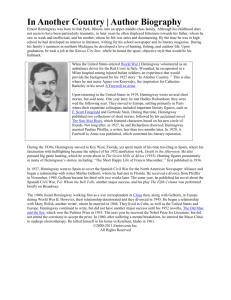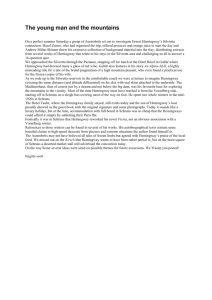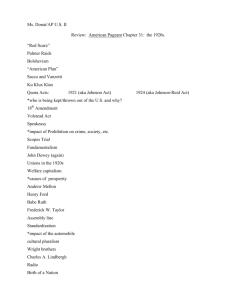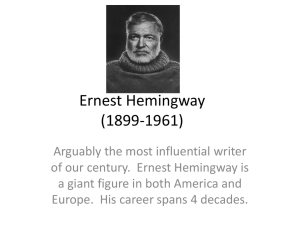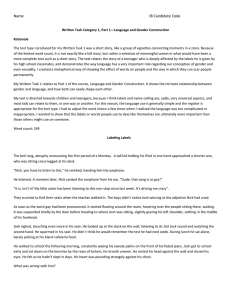What is the dominant mode of presentation in this story?
advertisement
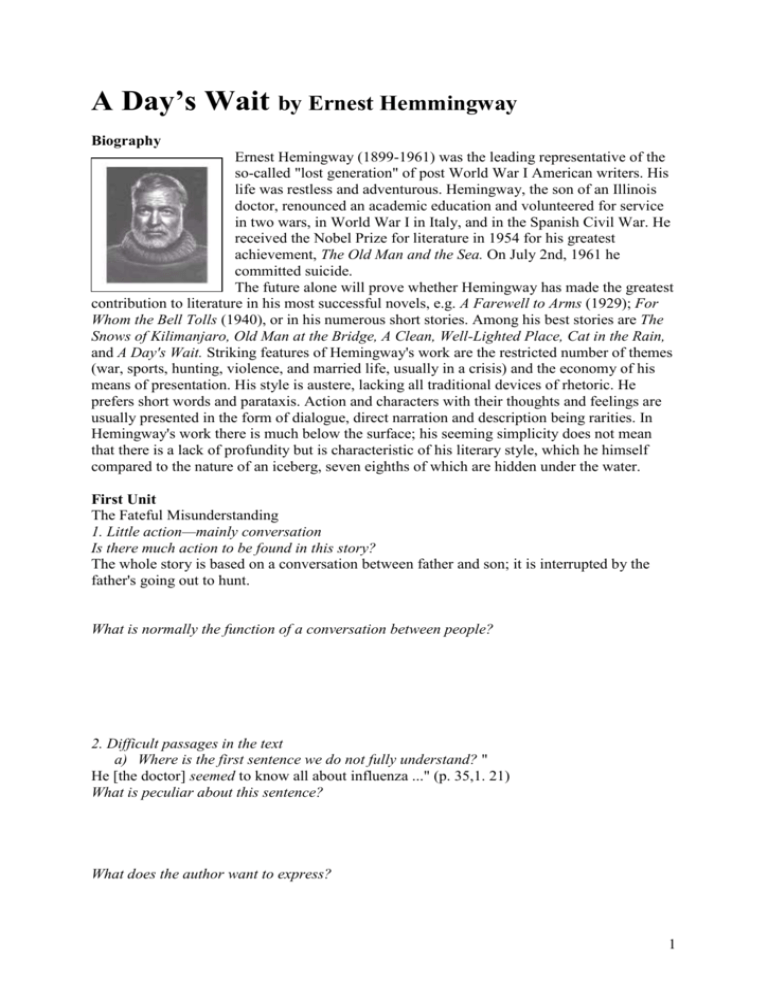
A Day’s Wait by Ernest Hemmingway Biography Ernest Hemingway (1899-1961) was the leading representative of the so-called "lost generation" of post World War I American writers. His life was restless and adventurous. Hemingway, the son of an Illinois doctor, renounced an academic education and volunteered for service in two wars, in World War I in Italy, and in the Spanish Civil War. He received the Nobel Prize for literature in 1954 for his greatest achievement, The Old Man and the Sea. On July 2nd, 1961 he committed suicide. The future alone will prove whether Hemingway has made the greatest contribution to literature in his most successful novels, e.g. A Farewell to Arms (1929); For Whom the Bell Tolls (1940), or in his numerous short stories. Among his best stories are The Snows of Kilimanjaro, Old Man at the Bridge, A Clean, Well-Lighted Place, Cat in the Rain, and A Day's Wait. Striking features of Hemingway's work are the restricted number of themes (war, sports, hunting, violence, and married life, usually in a crisis) and the economy of his means of presentation. His style is austere, lacking all traditional devices of rhetoric. He prefers short words and parataxis. Action and characters with their thoughts and feelings are usually presented in the form of dialogue, direct narration and description being rarities. In Hemingway's work there is much below the surface; his seeming simplicity does not mean that there is a lack of profundity but is characteristic of his literary style, which he himself compared to the nature of an iceberg, seven eighths of which are hidden under the water. First Unit The Fateful Misunderstanding 1. Little action—mainly conversation Is there much action to be found in this story? The whole story is based on a conversation between father and son; it is interrupted by the father's going out to hunt. What is normally the function of a conversation between people? 2. Difficult passages in the text a) Where is the first sentence we do not fully understand? " He [the doctor] seemed to know all about influenza ..." (p. 35,1. 21) What is peculiar about this sentence? What does the author want to express? 1 What could the doctor not anticipate? b)Where are difficulties in the dialogue that conceal its meaning? "You don't have to stay in here with me, Papa, if it bothers you." "It doesn't bother me." "No, I mean you don't have to stay if it's going to bother you." (p. 36, 11. 10-13) Why do these sentences seem to be misleading or ambiguous? 3. Hemingway's idea of human interrelationship Who is responsible for the misunderstanding? Why can we call the father-son relationship tragic? Second Unit The Story within the Story What is the dominant mode of presentation in this story? The greater part of the story is rendered in the form of dialogue. But in the middle of the story-there is a change in the mode of narration. The dialogue is superseded by a narrative and descriptive passage (narration of the action and description of the scenery). 2 What is this passage about? 1.How are the landscape and the father's behaviour in it described? . 2. Do you see a connection between the father-son relationship and the way the wintry landscape is described? 3. Why are we told that the father went out to kill some quail? 3 Summary of the main results (synthesis) 1. Despite its striking shortness and compactness (there is hardly any descriptive or decorative detail), the interpolated hunting scene is essential for the understanding of the whole story. What is presented in the main action (a misunderstanding between father and son) would * hardly be more than an anecdote unless it was symbolically mirrored in the inserted story. By this structural device the main theme is resumed and given special emphasis. 2. The father leaves his sick son alone out of helplessness. It is this helplessness that is revealed again when he is hunting in the wintry landscape. A close contact both with his son and with nature is impossible. This helplessness is closely connected with thoughtlessness on the part of the father. He makes light of the boy's illness and does not inquire after his strange behaviour. Therefore he can enjoy the hunting pleasures whereas his son feels utterly lonely. 3. Helplessness and thoughtlessness are attendant circumstances of the misunderstanding among people. The paradox of being together and separate at the same time is symbolically expressed by that transparent layer of ice covering nature. This fact that there is an insurmountable barrier between people is typical of human existence. Annotations page 35 3 to ache [eik] to hurt – 16 one hundred and two degrees Fahrenheit (freezing-point at 32° and boiling-point at 212°) 18 capsule 19 purgative a substance having the power to cleanse the bowels - acid sour – 20 germ bacillus – 24 pneumonia [nju:'mounja] serious illness with inflammation of the lungs – 31 Howard Pyle American author. page 36 11 to bother to cause trouble to – 14 light-headed confused – 17 sleet [sli:t] falling snow mixed with rain – 19 to varnish to put a hard transparent coating (thin covering) on the surface of s.th. 20 setter long haired dog – 22 to slip to lose one's balance – to slither [i] to slide or slip unsteadily – 24 to flush to (cause to) rise suddenly and fly away (of birds) – covey small flock of birds – quail Wachtel – 27 mound small hill; the cut brush had been piled up and was covered with ice forming a kind of hill – 29 to be poised [poizd] to be balanced – 37 to flush to become red. page 37 11 to hold tight on to o.s. to keep strong feelings under control, to be very tense – 25 forty-four degrees the boy is talking of Centigrade while the doctor was talking of Fahrenheit – 29 thermometer 36 to relax to become less tight or stiff37 slack inactive, lax. 4
